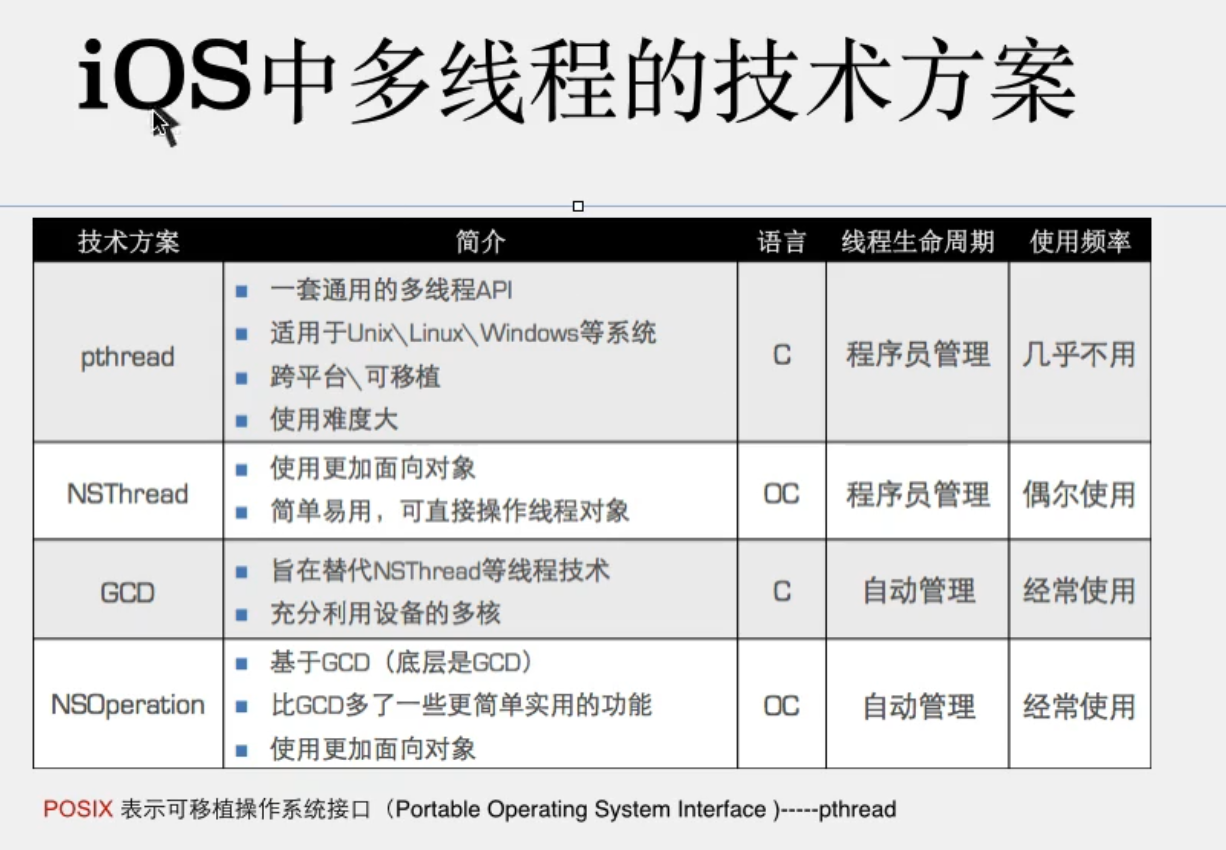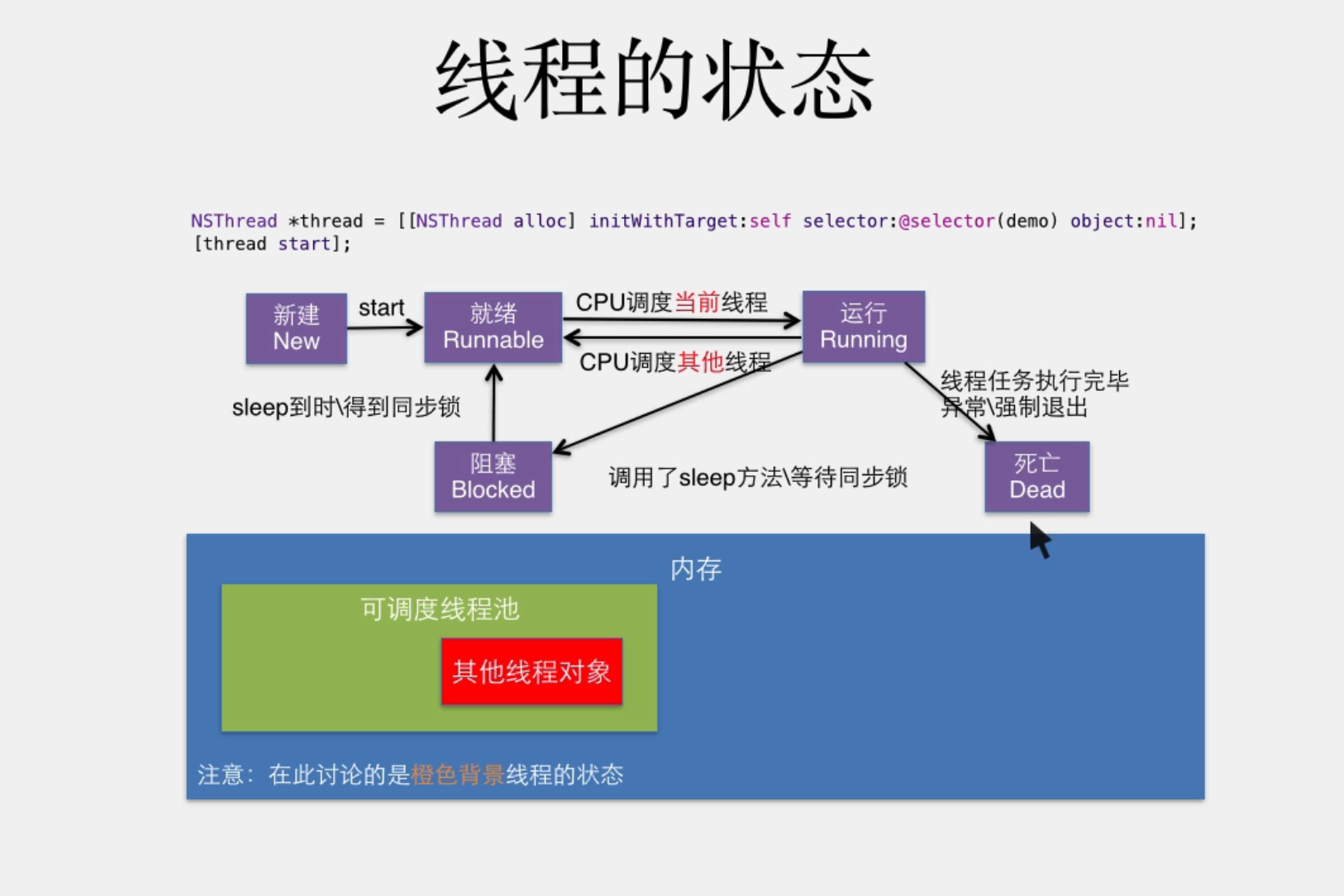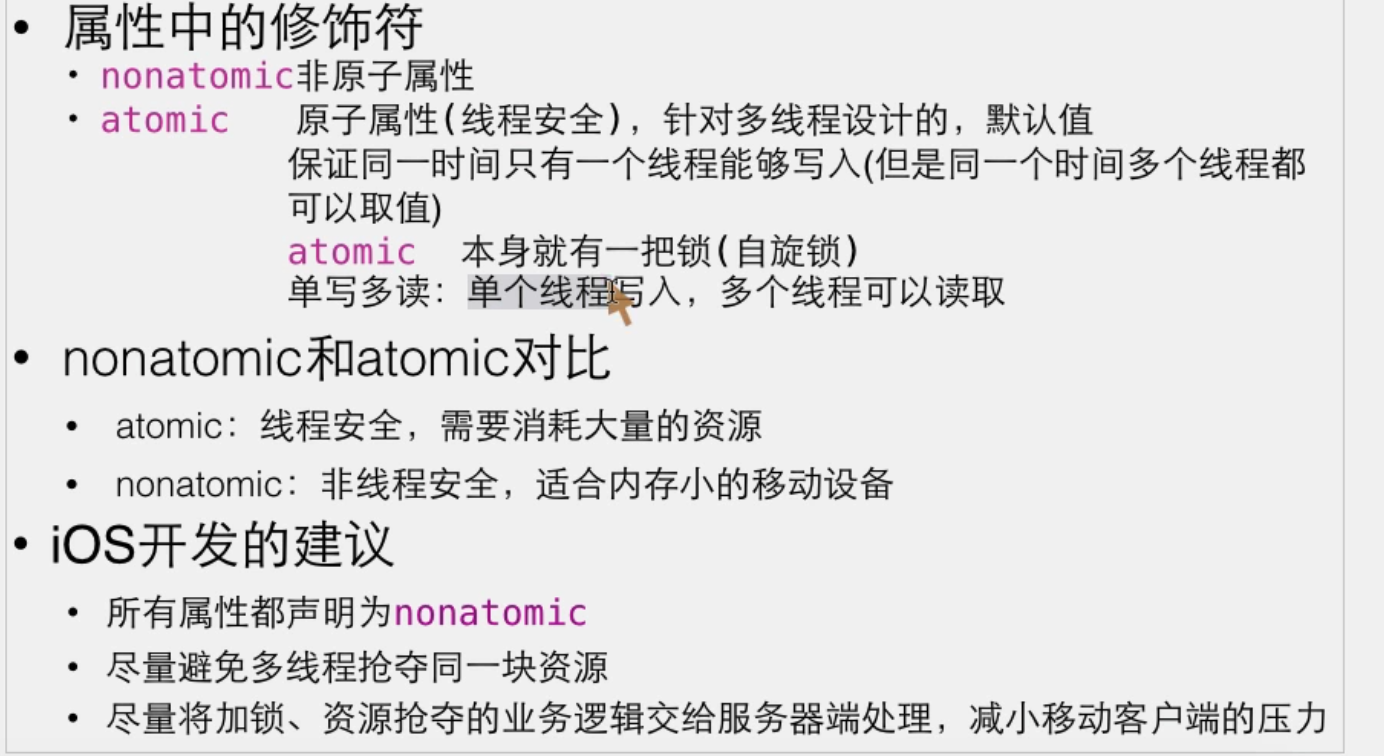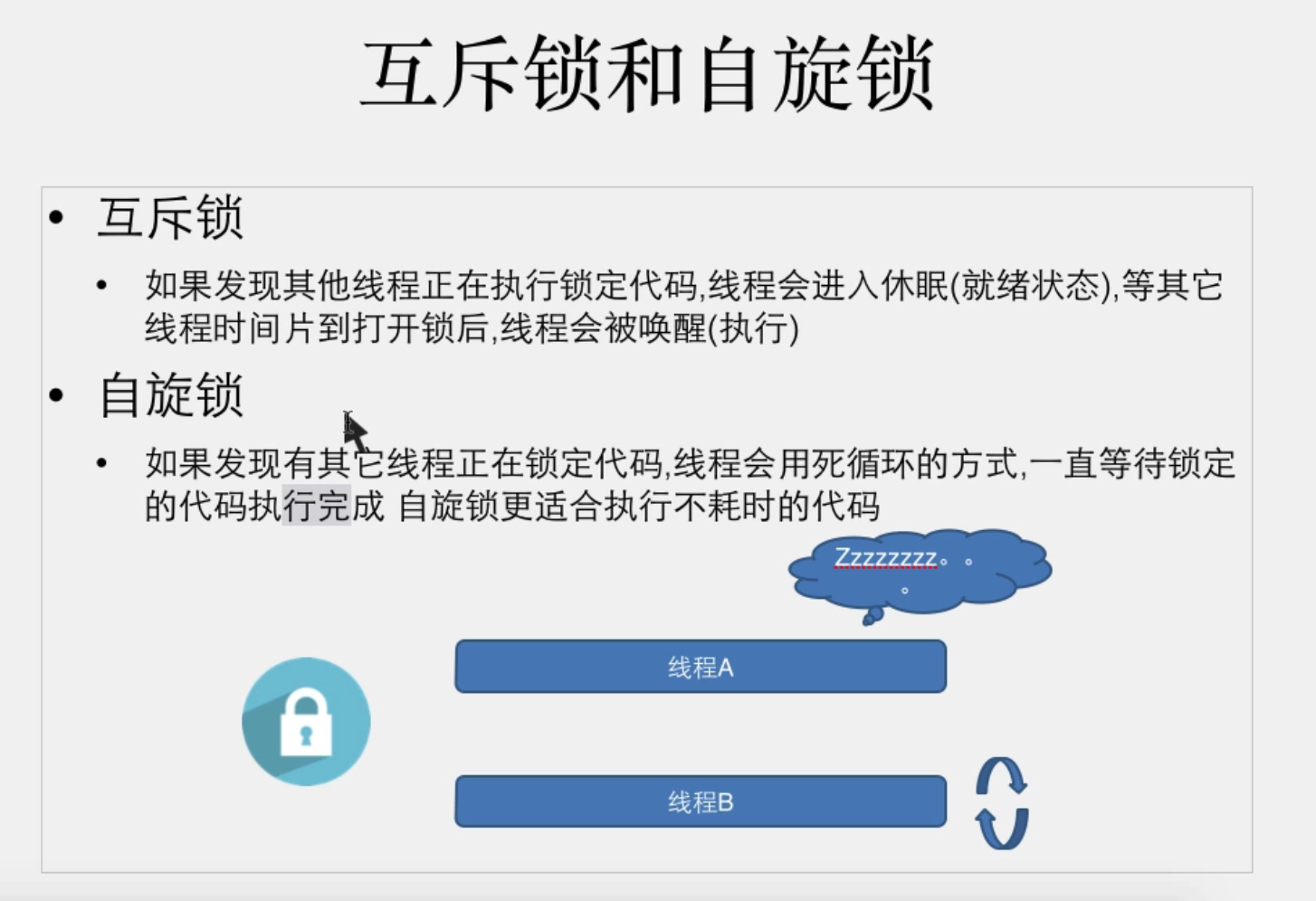一、多线程的优缺点
二、主线程:
三、多线程的技术方案
四、线程状态和属性
五、多线程访问共享资源的问题
一、多线程的优缺点:
优点:
1.能适当提高程序的执行效率
2.能适当提高资源的利用率(cpu,内存);
3.线程上的任务执行完成之后,线程会自动销毁;
缺点:
1.开启线程需要占用一定的内存空间(默认占用512KB);
2.开启大量的线程,会占用大量的内存空间,降低程序的性能;
3.线程越多,cpu在调用线程上的开销就越大;
4.程序设计更加复杂,比如线程间的通信,多线程的数据共享
二、主线程:
一个程序运行后,默认会开启一个线程,称为主线程或 ui线程,主线程一般用来刷新ui界面,处理ui事件(点击、滚动、拖拽)
使用注意:
1.不要将耗时操作放到主线程中
2.耗时操作会卡住主线程,严重影响ui的流畅度,给用户一种卡的体验;
三、多线程的技术方案

1、pthread
/** 参数一:线程编号的地址 参数二:线程的属性 参数三:线程要执行的函数 void * (*) (void *) //int *指向int类型的指针 void *指向任何类型的指针 类似oc中的id 参数四:要执行的函数的参数 函数的返回值 :int 0是成功 非0是失败 */ pthread_t pthread;//线程编号 // char *name="zs"; NSString *name=@"zs"; //把oc中的对象传递给C语言的函数要桥接,反过来也一样 int result= pthread_create(&pthread, NULL , demo, (__bridge void *)(name)); if(result==0){ NSLog(@"成功"); }else{ NSLog(@"失败"); }
void *demo(void *param){ //param:name的值,传的参数 NSString *name=(__bridge NSString *)(param); NSLog(@"执行 %@ %@",name,[NSThread currentThread]); return NULL; }
2、NSThread
/** 方式一 */ NSThread *thread=[[NSThread alloc] initWithTarget:self selector:@selector(threadDemo) object:nil]; [thread start]; /** 方式二 */ [NSThread detachNewThreadSelector:@selector(threadDemo) toTarget:self withObject:nil]; /** 方式三 */ [self performSelectorInBackground:@selector(threadDemo) withObject:nil]; /** 带参数 */ NSThread *threadParameter=[[NSThread alloc] initWithTarget:self selector:@selector(threadDemoParameter:) object:@"我是参数的值"]; [threadParameter start];
- (void) threadDemo{ NSLog(@"threadDemo执行 %@",[NSThread currentThread]); } - (void) threadDemoParameter:(NSString *)name{ NSLog(@"threadDemo执行 %@",[NSThread currentThread]); NSLog(@"threadDemo执行 %@ %@",[NSThread currentThread],name); }
四、线程状态和属性

[NSThread sleepForTimeInterval:3];//线程休眠3秒 [NSThread exit];//线程退出
[NSThreadisMainThread];//判断当前线程是否是主线程
threadParameter.threadPriority=1.0;//设置线程的优先级,0-1 数字越大优先级越高;
五、多线程访问共享资源的问题
当多线程访问同一块资源时,很容易引发数据错乱和数据安全问题
解决方法:加上线程锁 互斥锁 :实现线程同步 加锁会影响程序的性能
@synchronized (self) { //要加锁的逻辑 }

